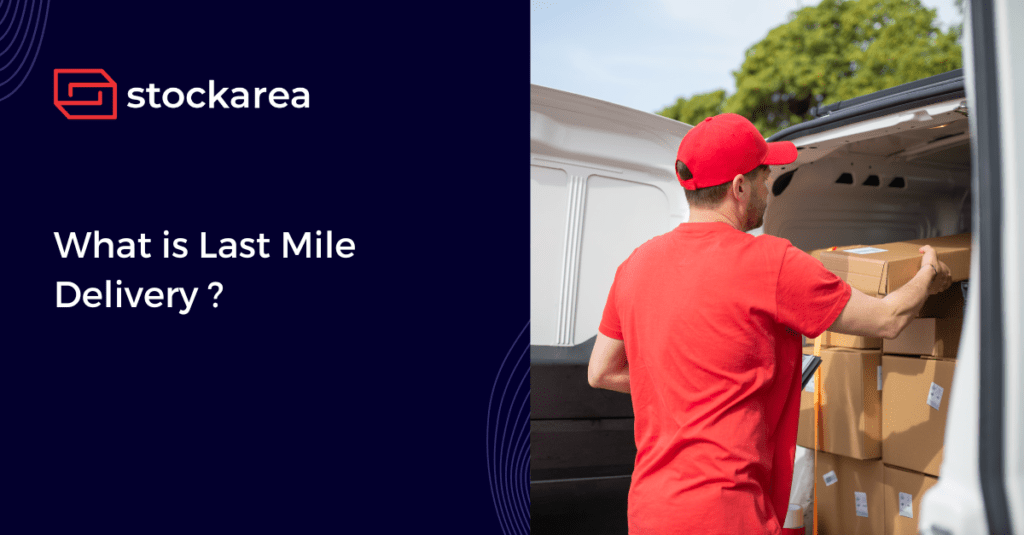Last mile delivery refers to the final phase of the delivery process, during which a package is transported from a transportation hub to its final destination, which is typically a residential building or retail store. This is the most important phase in the delivery process, and organisations strive to make it as quick and effective as possible. This is to keep up with the rising consumer expectation for expedited shipment, particularly in the e-commerce, food, and retail industries. It is also the most expensive part of the route for commodities travelling to their final destination.
Key Steps in the Last Mile Delivery Process
1. Registration of the Order
First, orders are entered digitally into a centralised system. Orders and requests are tracked at this stage by both the sender and the final recipient, who is likely monitoring the status of their delivery using a tracking number.
2. Arrival at the Distribution Centre
At this stage, the order arrive at the distribution center, where they are dispatched and shipped to the recipient. This is a crucial stage in the last mile delivery process as it effects the delivery time of the shipment. The companies try to ensure that the order is delivered as swiftly as possible from the transportation hub to the customer.
3. Allocation to Delivery Services
Orders are assigned to delivery workers based on routes and recipient addresses in the third step. In order to have an optimal, cost-effective last-mile delivery logistics solution, it is vital to classify and designate parcels for delivery strategically.
4. Preload order scan
Orders are scanned prior to delivery truck loading. This updates the order status for both the sender and the recipient tracking the shipment. It also decreases the possibility of misplaced packages along the route.
5. Final delivery
Orders are successfully delivered and confirmation of delivery is acquired. The parcel has reached its final destination at this point. The delivery staff then verifies and confirms the delivery by updating the tracking information accordingly.
Last Mile Delivery Challenges
1. High Costs
Several challenges weigh down the whole supply chain and last-mile delivery operations, making them the most expensive. The constantly expanding demand for same-day delivery, antiquated IT infrastructure, poor logistics visibility, and other factors pose significant obstacles to its execution. Clearly, optimising last-mile delivery will reduce total shipment costs. Inefficient routing techniques, manual task allocation, and inadequate management of third-party logistics providers make it difficult to reduce delivery turn-around time and threaten the shipping process. Since same-day delivery usually involves few products, maximising vehicle capacity is difficult, reducing logistics firm savings. Therefore, this results in a corresponding increase in the associated costs.
2. Rigid processes resulting in inadequacy
In a world driven by instant fulfilment and continuously shifting market dynamics, rigid delivery systems, which are regarded as one of the most significant supply chain inefficiencies, have little place. Traditional processes that rely on manual involvement fail to meet consumer expectations and result in a sharp increase in customer discontent. For example, current consumers favour brands that allow them to adjust the delivery place and time based on their convenience.
3. Poor Supply Chain Visibility
There are many factors contributing to the lack of visibility in logistics operations, including outdated supply chain architecture and outdated delivery methods with inadequate system interoperability. For example, If an order management system is not synchronised with a last-mile 3PL provider’s system, it will be extremely difficult for a logistics manager to track and trace the precise location of a truck at any given time. This results in a multitude of inefficiencies. Poor visibility results in delays, false ETAs, route diversions, vehicle idling, and additional fuel consumption, and also obscures deliveries to customers, which exacerbates the problem of last-mile delivery.
Related posts
- How To Start Ecommerce Business In India
- What Is An Online Marketplace?
- What Is Dropshipping?
- 6 Simple Steps To Start Dropshipping Business
- How to Choose the Right E-commerce Fulfilment Partner for Your Business
- Dropshipping Vs E-Commerce Fulfillment: Which Is Best For Online Seller?
- Amazon FBA : Complete Beginners Guide
- 6 Proven Tips To Reduce Shipping Costs
- 7 Simple Ways To Reduce Ecommerce Costs
- Beginners Guide To Sell On Amazon In 2024
- Complete Guide On Amazon Seller Central
- 7 Pro Tips To Increase Amazon Sales
- 7 Proven Ways To Boost Flipkart Sales
